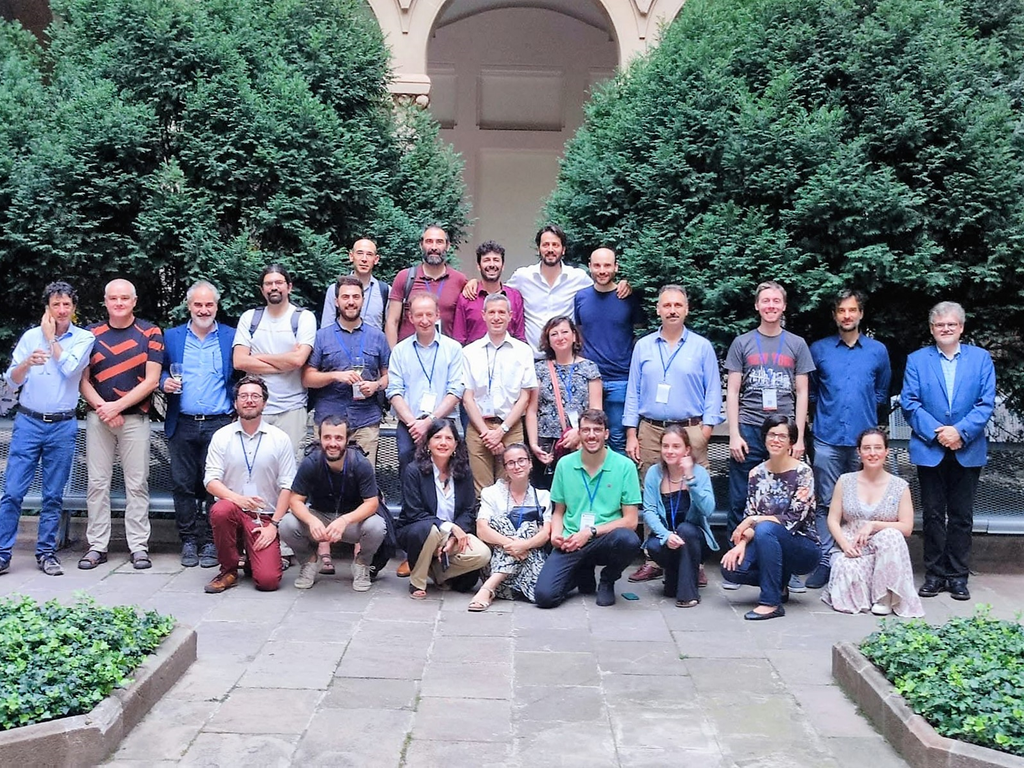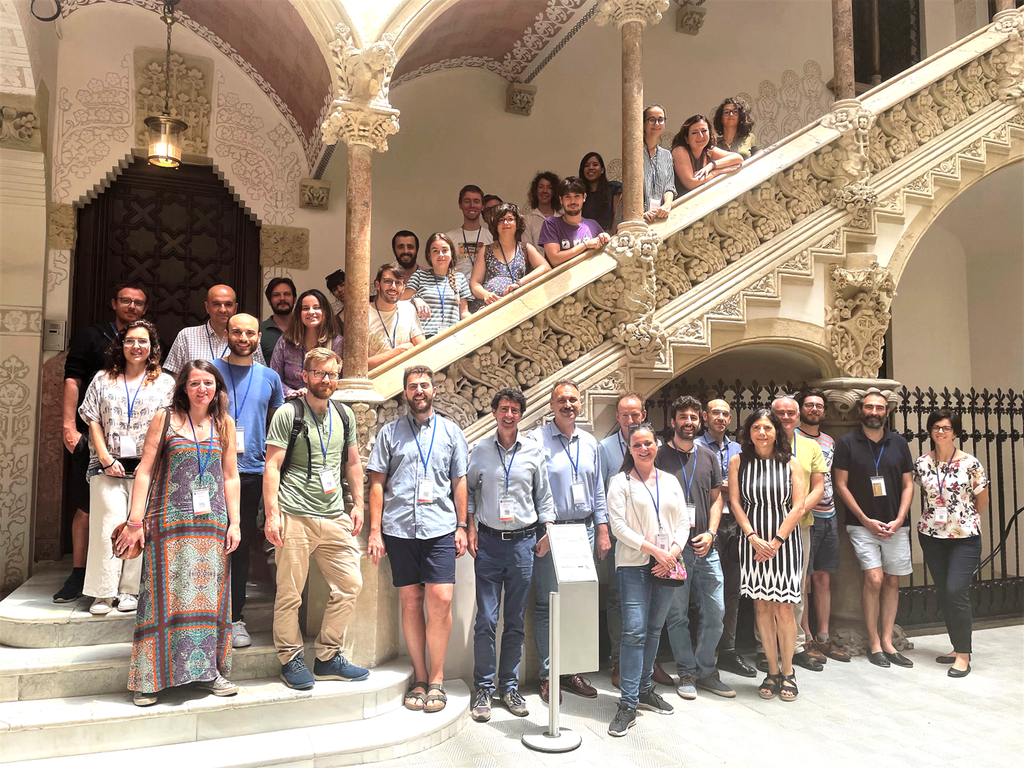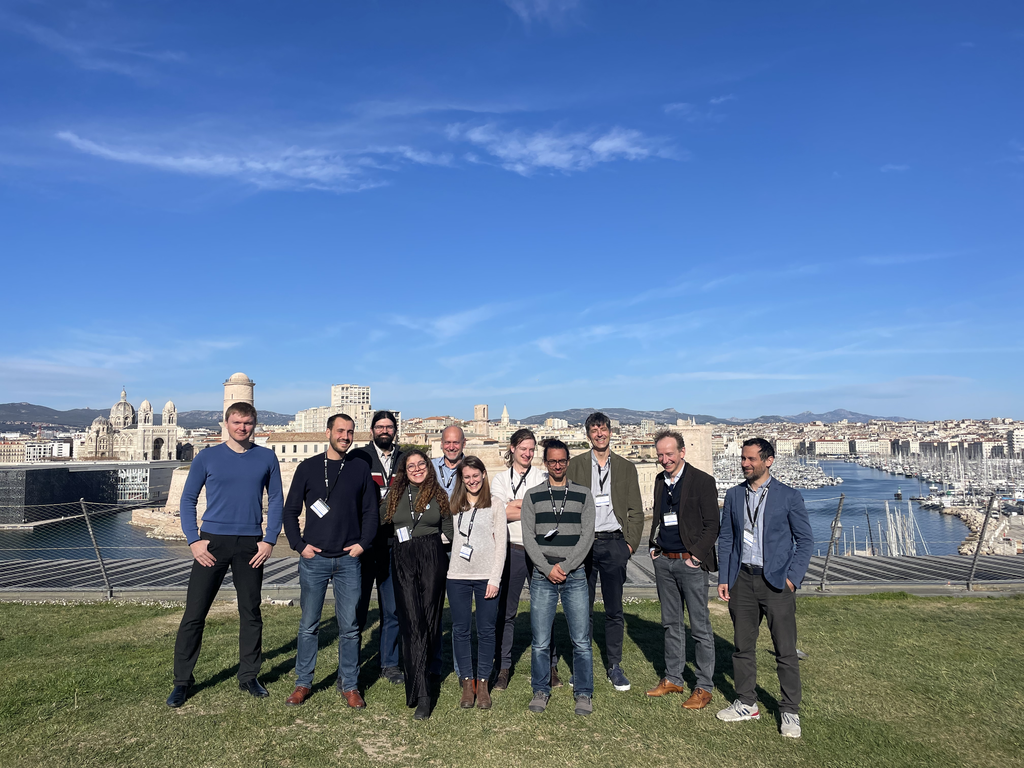Consciousness & Cognition
Overview
-
We focused on the multiscale understanding of different brain states: physiological (e.g. sleep, awake), drug-induced (e.g. anaesthesia) and pathological (e.g. disorders of consciousness). The study of the mechanisms and spatiotemporal properties of brain states provide the building blocks that support consciousness and cognition.
-
A main objective of this focus area was to collaboratively generate integrated data and computational models supporting the understanding of different brain-states, transitions across them, network complexity and cognitive functions.
- In parallel, we developed an ethical and philosophical framework for the experimental and computational explorations of cognition and consciousness.
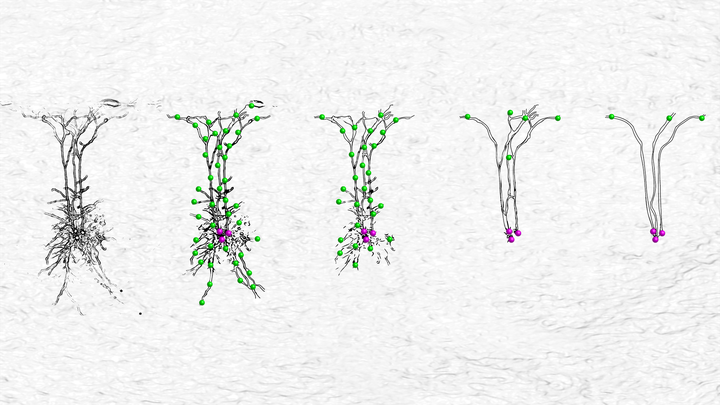
Collaborative multiscale approach
From the structural point of view, the brain comprises highly intricate networks between neurons, nuclei, and areas. From the functional perspective, the brain can express a large variety of dynamical patterns, ranging from highly synchronous (sleep, deep anaesthesia, epilepsy) to asynchronous states (awake, attention). There are other conditions in which different functional states are expressed, as in the presence of drugs (e.g., anaesthesia), or in pathological conditions (e.g., disorders of consciousness, stroke, epilepsy). In this focus area, we aim at the multiscale understanding of different brain states and how they can support consciousness and cognition. It is also our objective to obtain a better, mechanism-based quantification of consciousness levels and contents, as well as new approaches to the treatment of alterations of consciousness following brain damage. To achieve these objectives, we have collaborated with 40 research groups, comprising a large variety of experimental, clinical, analytical, and computational methodologies that aimed at advancing our understanding of how cognition and consciousness emerge from brain networks. We worked hand in hand with philosophers and ethicists to develop a philosophical and ethical framework for the experimental and computational explorations of cognition and consciousness.
Showcase 3. Brain Complexity and Consciousness demonstrated the simulation of unconscious states in three species: human, mouse, and monkey. The generation of unconscious states, like the effect of anaesthesia or the sleep-wake cycle, could be related to changes in microscopic parameters, such as the level of hyperpolarisation of the neurons, changes in GABA-A-receptor kinetics, or augmentation of spike-frequency adaptation. In Showcase 3, both empirically observed spontaneous and evoked dynamics could be simulated using anatomical and connectivity data from all three species. Moreover, Showcase 3 also focused on the effects of anaesthesia and the responsiveness of cortical networks at a large-scale level using TVB, with a spatial resolution that approaches the one of a cortical column. The fine-tuning of the microscopic parameters enables the study of a wide range of conditions, thus allowing the study of the universality of slow waves between species and between the different mechanisms underlying unconscious states.
Simulation of brain states in mouse, macaque and human. Whole-brain simulations of wake-like (conscious) and anaesthesia (unconscious) states in three different species. (References: Goldman et al. Biorxiv 2020; Goldman et al. Biorxiv 2021).
Find out more about the Showcase 3 here.
Showcase 4 Object Perception and Memory built predictive coding models combining cognitive and perceptual mechanisms with the dynamics and neuronal circuitry characteristic of the cortex. To illustrate this process, an integrative suite of three complementary models with different levels of biological realism has been developed: 1) a neurobiological model of spiking cortical columns, 2) a cognitive model of invariant object perception and 3) a hybrid model of a predictive coding based spiking neural network. Showcase 4 presents the highlights of each of these models and elaborates how the knowledge gained from these models can be integrated to improve our understanding of perception and brain diseases.
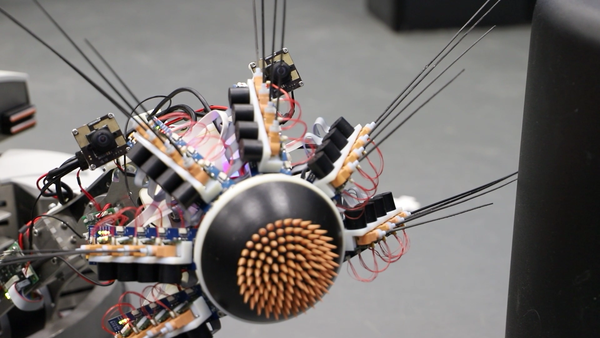
Figure reference: A robot on EBRAINS has learned to combine vision and touch - EBRAINS. (n.d.). retrieved June 28, 2022, from https://ebrains.eu/news/robot-on-ebrains-combine-vision-touch/
Find out more about showcase 4 here.
Check out Showcase 4 latest video.
Subtopics
Cognition: Object recognition
To enable perception and recognition of objects through multiple senses, the brain must segregate (separately identify) and integrate information about their properties. We do not yet understand how these fundamental processes are mediated by neural mechanisms, especially in the neocortex. We investigated critical questions that remain open: how does the brain construct the kind of representations of objects we become aware of? How is it that, in perception, we have the experience of a specific view on an object, but also recognize its identity despite variations in position or viewing angle? And how are cortical circuits involved in object representations? Which cortical laminae and cell types are involved? How can local and long-range circuit mechanisms involving specific cell types with dendritic interactions shape multisensory integration? How can computational mechanisms be scaled up to comprise larger networks, dynamically performing perceptual and cognitive operations? What role do motor systems and the principle of active sensing play in multisensory segregation and integration? By means of experimental models, data analytics, computational models, multi-scale simulations and research in neurorobotics, now available in EBRAINS, we were implementing object recognition in an artificial, multisensory agent that used this cognitive capability to navigate through environments.
Figure references:
A robot on EBRAINS has learned to combine vision and touch - EBRAINS. (n.d.). retrieved June 28, 2022, from https://ebrains.eu/news/robot-on-ebrains-combine-vision-touch/
Dora, S., Bohte, S. M., & Pennartz, C. M. A. (2021). Deep Gated Hebbian Predictive Coding Accounts for Emergence of Complex Neural Response Properties Along the Visual Cortical Hierarchy. ORIGINAL RESEARCH article Front. Comput. Neurosci., 28 July 2021
People and Groups
| Cyriel Pennartz - Department of Cognitive and Systems Neuroscience, University of Amsterdam, FNWI, Swammerdam Institute for Life Sciences - NL |
| Giovanni Pezzulo - National Research Council of Italy, Institute of Cognitive Sciences and Technologies (ISTC-CNR), in Rome - IT |
| Markus Diesmann - Forschungszentrum Jülich, Institut für Neurowissenschaften und Medizin (INM) - DE |
| Sacha van Albada - Forschungszentrum Jülich, Institut für Neurowissenschaften und Medizin (INM) - DE |
| Hans Ekkehard Plesser - Norges miljo-og biovitenskaplige universitet, Fakultet for realfag og teknologi, Institutt for datavitenskap - NO |
| Walter Senn - Universitaet Bern, Institut für Physiologie, Computational Neuroscience lab - CH |
| Pieter Roelfsema - Netherlands Institute for Neuroscience - NL |
| Jorge Mejias - Universiteit van Amsterdam, Faculty of Science, Swammerdam Institute for Life Sciences - NL |
| Emrah Duzel - Deutsches Zentrum fuer Neurodegenerative Erkrankungen EV, Clinical Neurophysiology and Memory - DE |
| Matthew Larkum - Humboldt-Universität zu Berlin - DE |
| Lars Muckli - Centre for Cognitive Neuroimaging, School of Psychology & Neuroscience, University of Glasgow - UK |
Quantification and modelling of different brain states
The cerebral cortex network can express a large variety of dynamical patterns, ranging from highly synchronous (sleep, deep anaesthesia, epilepsy) to asynchronous states (awake, attention). Each of these states are associated to different spatiotemporal patterns of activity, network complexity, information processing properties, behaviours and consciousness levels. How can the same network express all those different states and transitions across them? What are the underlying mechanisms? To identify, characterise and understand the network dynamics in such states, we explored the spontaeous activity emerging from the network across the different brain states, with a focus in the transitions across them, and we carry out a multi-scale comparison across levels, ranging from simple in vitro systems to clinical pathological states (disorders of consciousness, stroke) to capture the unique, common properties across them. Data-driven models will provided a unifying framework to single out an effective and reductionistic representation, capable ofreproducing in the same system the dynamical regimes observed at different scales. Such an approach gives access to a larger exploration of variables than those experimentally testable, generating predictions and open questions that then can be experimentally tested.
A. Two network states simulated in AdEx networks with RS (blue) and FS cells (red). Top: Asynchronous irregular (AI) state for low levels of adaptation (b=5 pA) ; Bottom: Up/Down states forming slow oscillations for higher levels of adaptation (b = 60 pA). B. Respective mean firing rates in the AdEx networks. C. AdEx mean-field model in the same conditions. The yellow trace shows the time course of adaptation. D. Integration of mean-field models to form large-scale brain networks (scheme). The two graphs show the superimposed activity of 80 regions scattered across the brain (inhibitory activity in red, excitatory in blue). The same two states as in A-C at the large scale show asynchronous (top) and slow-wave dynamics (bottom). When each region is set to the slow-wave mode, different regions tend to synchronise. Figure modified from Goldman et al. Biorxiv 2020. (References: Goldman et al. Biorxiv 2020; Goldman et al. Biorxiv 2021).
People and Groups
| Alain Destexhe - CNRS, Directeur de Recherche (DRCE) CNRS, Directeur adjoint de NeuroPSI - FR |
| Mavi Sanchez-Vives - Consorci Institut d'Investigacions Biomediques August Pi i Sunyer, Systems neuroscience Group Leader and Research Professor at the Institució Catalana de Recerca i Estudis Avançats (ICREA) - ES |
| Marcello Massimini - Universita Degli Studi Di Milano, Department of Biomedical and Clinical Sciences "L. Sacco" - IT |
| Johan Storm - University of Oslo, Institute of Basic Medical Sciences - NO |
| Pier Stanislao Paolucci - Istituto Nazionale di Fisica Nucleare (INFN) - IT |
| Maurizio Mattia - Institute Superiore di Sanita (ISS), Natl. Center for Radiation Protection and Computational Physics, Faculty Member - IT |
| Markus Diesmann - Forschungszentrum Jülich, Institut für Neurowissenschaften und Medizin (INM) - DE |
| Francesco Pavone - LENS - European Laboratory for Non-Linear Spectroscopy - IT |
| Gaute Einevoll - Norges miljo-og biovitenskaplige universitet - NO |
| Viktor Jirsa - Universite d’Aix Marseille, INSTITUT DE NEUROSCIENCES DES SYSTÈMES - FR |
| Olivier David - Universite d’Aix Marseille - FR |
| Emmanuel Barbier - Université Grenoble Alpes, Grenoble Institut Neurosciences GIN - Équipe "Neuroimagerie fonctionnelle et perfusion cérébrale" - FR |
| Theofanis Panagiotaropoulos - INSERM researcher at UNICOG laboratory in NeuroSpin - FR |
Consciousness levels: measures and clinical implications
We wanted to understand how complexity emerges from the underlying brain networks based on multiscale data and computational models, how it could be best measured, and how it was related to the emergence of awareness, allowing cognition. We combined our brain complexity measures in humans with the cellular and network mechanisms involved in this phenomenon, investigated by using equivalent paradigms. An aim was to have methods for measuring the consciousness level in patients with DOC (disorders of consciousness) in a reliable and clinically useful way. This approach was based on a theoretical concept, coupled with measurements of the connectivity and brain dynamics. It has been further developed in a multi-centre observational studies to measure awareness, as a preparatory step for translation to clinical use including US and European hospitals.
Cerebral integrity and function can be studied at the regional level, but is more often studied at the level of the network. Such studies from the basis for the development of comphresensive frameworks for how brain function supports behaviour and consciousness. Automatic functions, such as respiration and cardiac activity do rely on brain function but not on consciousness. These functions are usually preserved in comatose (without eye opening) patients and those in the unresponsive wakefulness syndrome (eye opening is present). Low levels of consciousness can be observed via e.g., visual, auditory or motor function such as visual pursuit or response to command. This is the case for patients in the minimally conscious state. When cerebral integrity is (partially) intact, higher level brain function can be associated to the generation of thoughts, cognition and selfhood. Credits: Jitka Annen, GIGA Consciousness, Coma Science Group, University of Liege and Centre du Cerveau2, University hospital of Liège. References: Annen, J., et al. & Laureys, S. (2016). Function–structure connectivity in patients with severe brain injury as measured by MRI‐DWI and FDG‐PET. Human brain mapping, 37(11), 3707-3720; Bodart, et al. & Laureys, S. (2017). Measures of metabolism and complexity in the brain of patients with disorders of consciousness. NeuroImage: Clinical , 14 , 354-362; Annen, J., et al. (2018). Regional brain volumetry and brain function in severely brain‐injured patients. Annals of neurology , 83 (4), 842-853.
People and Groups
| Steven Laureys and Jitka Annen - Coma Science Group at the GIGA (ULg) and Department of Neurology, Sart Tilman Liège University Hospital - BE |
| Bertrand Thirion - Institut National de Recherche en Informatique et en Automatique (INRIA), Head of Parietal, an Inria-CEA joint Team part of the Neurospin research center where our main partners are the UNICOG and UNATI - FR |
| Francisco Clascá - Universidad Autonoma de Madrid, Cellular connectomics laboratory - ES |
| Gustavo Deco and Gorka Zamora-Lopez - Universitat Pompeu Fabra, Computational Neuroscience group, Center of Brain and Cognition (UPF) - ES |
| Mavi Sanchez-Vives - Consorci Institut d'Investigacions Biomediques August Pi i Sunyer, Systems neuroscience Group Leader and Research Professor at the Institució Catalana de Recerca i Estudis Avançats (ICREA) - ES |
| Pau Gorostiza - Fundacio Institut de Bioenginyeria de Catalunya, Group Leader / ICREA Research Professor, Nanoprobes and Nanoswitches - ES |
Consciousness content: perceptual consciousness and applications
Why are some sensory stimuli consciously detected, whereas others remain subliminal? What is the relation between consciousness and cognition? We built on previous research, which suggests that stimuli need to reach higher cortical areas to reach consciousness. It is hotly debated whether the frontal cortex has a unique role in producing consciousness and many other brain structures have been proposed as essential for conscious perception as well. We dissociated the mechanisms for phenomenal awareness (the awareness of stimuli) and conscious report (the ability to report and used them in successive cognitive steps). We investigated the role of brain structures, such as the ventral tegmental area and locus coeruleus which impact on the level of consciousness. We used a range of different methods used to measure the differences between stimuli that do and do not enter consciousness, including single unit and multi-unit recordings, two-photon imaging, optogenetics, EEG and fMRI.
Dynamics of neural ignition in the Global Neuronal Workspace Theory. (A) Elementary simulations of networks with feedforward propagation and a higher set of areas with elevated recurrent excitation and feedback projections predict two dynamic states for an identical stimulus: either the incoming activity cascades upward in a self-amplified manner, ultimately igniting the entire network, thus corresponding to conscious access (A, right) or the propagating activity remains below the threshold for ignition and induces only a progressively decaying wave of activity in higher regions, corresponding to subliminal processing (A, left). (B and C) Electrophysiological test of those predictions in awake macaque monkeys. Recordings were performed in V1, V4, and PFC while monkeys attempted to detect a weak stimulus of variable contrast placed in the neurons’ receptive field (B). Monkeys reported target presence with an eye movement, thus resulting in four trial types: hits, misses, correct rejections, and false alarms (C). Depending on their strength, the missed stimuli could evoke strong early transients in V1 and V4, indicating that such firing was not sufficient for a consciously reportable representation. The main difference between conscious stimuli (hits and false alarms) versus non-conscious stimuli (misses and correct rejections) was late, sustained activity in PFC (green and blue curves) together with small but significant concomitant late sustained activation in V1 and V4 (see inset in middle panel). Missed stimuli evoked only transient, decaying PFC activity. Modified from data in van Vugt et al., 2018. (Reference: Mashour, G.A., Roelfsema, P.R. Changeux, J.-P. and Dehaene, S. (2020) Conscious processing and the global neuronal workspace hypothesis, Neuron 105, 776-798).
People and Groups
| Pieter Roelfsema - Netherlands Institute for Neuroscience - NL |
| Wim Vanduffel - KU Leuven, Research Group Neurophysiology - BE |
| Pietro Avanzini - Istituto di Neuroscienze del CNR - IT |
| Johan Storm - University of Oslo, Institute of Basic Medical Sciences - NO |
| Marcello Massimini - Universita Degli Studi Di Milano, Department of Biomedical and Clinical Sciences "L. Sacco" - IT |
| Cyriel Pennartz - Universiteit van Amsterdam, Faculteit der Natuurwetenschappen, Wiskunde en Informatica, Swammerdam Institute for Life Sciences - NL |
| Rainer Goebel - Universiteit Maastricht, Cognitive Neuroscience, Faculty of Psychology and Neuroscience - NL |
Ethical and philosophical framework
Both consciousness and cognition, including their neurobiological underpinnings and their clinical identification, require the contribution of different disciplines, including philosophical and ethical reflection, to advance in the direction of a better understanding and for maximising the resulting societal benefits. We aim to develop a multidisciplinary and multidimensional approach to consciousness and cognition, with particular focus on the clinical translation of the significant advances of the scientific research. To this end, we elaborated a framework for reducing the gap between different stakeholders (including basic, computational, and clinical neuroscientists, clinicians, and patients' representatives) involved in the diagnosis and the clinical treatment of patients with Disorders of Consciousness (DoCs). In fact, it was crucial to elaborate a model for translating relevant research from the laboratories to the patients' bedside. Philosophical and ethical reflections were aimed to facilitate this process through the elaboration of a conceptual and operational interface between the scientists, the clinicians, and the public. The conceptual clarification of consciousness, cognition, and their connection to the brain was therefore combined with ethical reflection on a number of emerging issues.
People and Groups
| Kathinka Evers - Centre for Research Ethics & Bioethics (CRB) at Uppsala University - SE |
| Michele Farisco - Centre for Research Ethics & Bioethics (CRB) at Uppsala University - SE |
| Mavi Sanchez-Vives - Consorci Institut d'Investigacions Biomediques August Pi i Sunyer, Systems neuroscience Group Leader and Research Professor at the Institució Catalana de Recerca i Estudis Avançats (ICREA) - ES |
| Marcello Massimini - Universita Degli Studi Di Milano, Department of Biomedical and Clinical Sciences "L. Sacco" - IT |
| Steven Laureys and Jitka Annen - Coma Science Group at the GIGA (ULg) and Department of Neurology, Sart Tilman Liège University Hospital - BE |
| Lars Muckli - Centre for Cognitive Neuroimaging, School of Psychology & Neuroscience, University of Glasgow - UK |
| Gustavo Deco and Gorka Zamora-Lopez - Universitat Pompeu Fabra, Computational Neuroscience group, Center of Brain and Cognition (UPF) - ES |
| Cyriel Pennartz - Universiteit van Amsterdam, Faculteit der Natuurwetenschappen, Wiskunde en Informatica, Swammerdam Institute for Life Sciences - NL |
Team
Acknowledgements to everyone who contributed to this Focus Area:
|
||||||||||||||||||||||||||||||||||||||||||||||||||||||||||||||||||||||||||||||||||||||||||||||||||||||||||||||||||||||||||||||||||||||||||||||||||||||||||||||||||||||||||||||||||||||||||||||||||||||||||||||||||||||||||||||||||||||||||||||||||||||||||||

